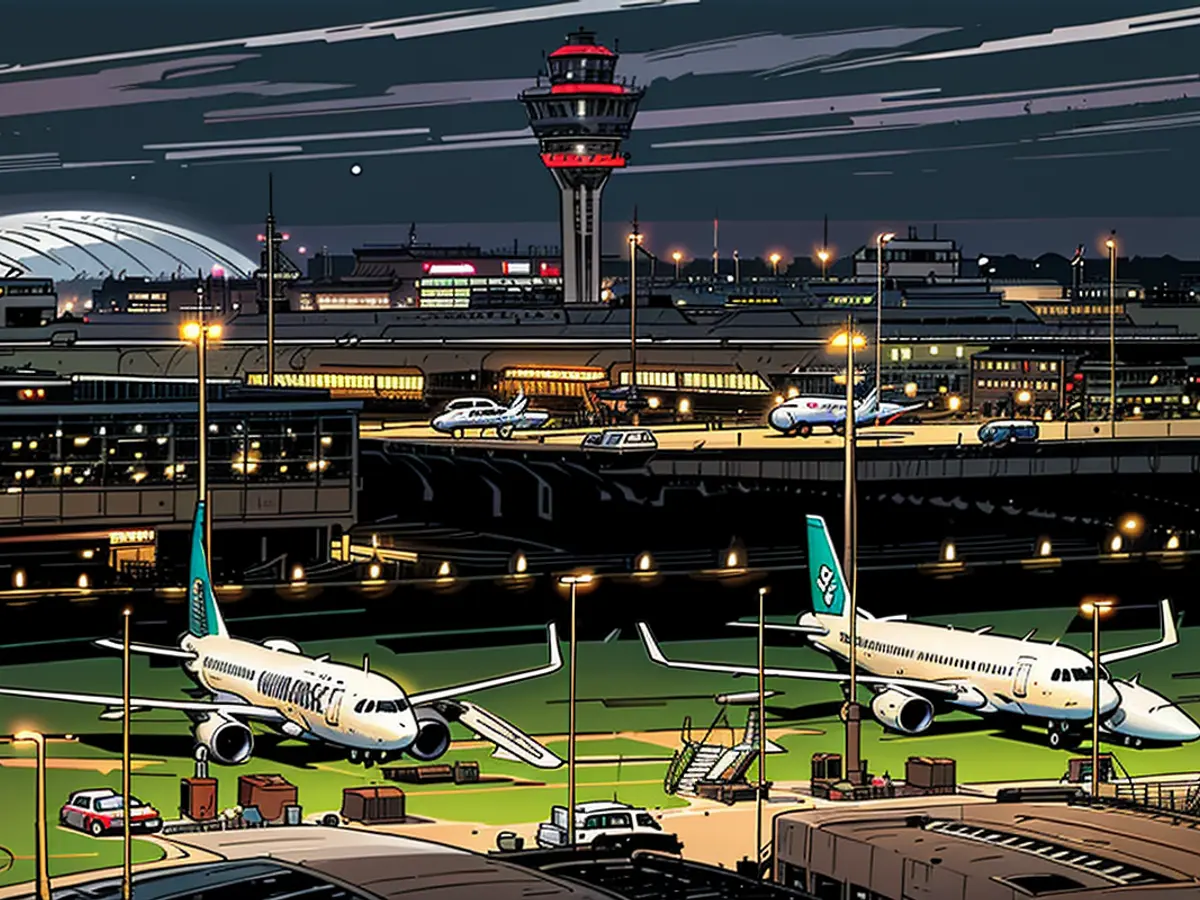Pilots consider Munich Airport particularly safe
Appreciation for Munich, Criticism for Frankfurt: The Pilot Union Vereinigung Cockpit evaluates airport safety in Germany beyond the legal minimum.
Airport Munich, according to the Pilot Union Vereinigung Cockpit (VC), is the safest in Germany and shines with an "excellent infrastructure". Following Munich in the annual airport rankings are Leipzig/Halle and the newly examined airport in Zurich. The Swiss Pilot Association Aeropers contributed to this.
In Zurich, the pilots particularly praised the consistent and mandatory use of so-called Stopbars. These are red light chains in the runways that guide to a start or landing strip. They prevent accidents by preventing aircraft or other vehicles from accidentally driving onto the runway. Austria also reported positive experiences with their 24-hour use.
In the catastrophic collision of two planes at the beginning of the year in Tokyo-Haneda, such bars were present but defective at the time of the accident. Five people died on board a Coast Guard plane, while the crew and passengers of an Airbus from Japan Airlines managed to escape the fire alive.
Recommendation for "Stopbars" use
According to experts, there are an average of five incidents per day in the USA where aircraft or vehicles enter the runway without permission. For Europe, they estimate the number of risks at two per week. With increasing flight density, they expect an increase in this number. "The Civil Aviation Organization ICAO and Eurocontrol recommend the use of Stopbars," explains Cockpit spokesman Frank Blanken. "It is all the more incomprehensible for us that their use is not yet standard in Germany."
According to a VC survey, seven of the most minor German airports have not installed Stopbars. In all other cases, they are only in operation under poor visibility conditions, a decision made jointly by the airports and German Air Traffic Control. The Federal Air Navigation Authority did not comment on the request.
Frankfurt Airport: In the Middle
The pilots also want to be involved in local safety committees, which is still missing at Frankfurt Airport and has led to criticisms. With a grade of 2.2, the largest German airport lands in the middle of the 31 airports evaluated. At the bottom of the report are Mannheim (2.9) and Lübeck (2.9). Weeze and Friedrichshafen have improved through the exemplary cooperation with the Vereinigung Cockpit.
A working group of the Vereinigung Cockpit has been evaluating German transport airports annually since 1978. For the first time, colleagues from Switzerland were involved in this evaluation. The evaluation criteria catalog covers both international regulations and sensible additional equipment from the pilot's perspective. The legal minimum requirements are not evaluated but are the responsibility of the authorities. Since all inspected airports are legally approved, the VC considers all German airports "fundamentally safe" from their perspective.
- Despite Frankfurt Airport's middle ranking in the annual evaluation, the Cockpit Association has criticized the lack of inclusion in local safety committees at the international hub.
- Munich Airport, as reported by the Cockpit Association, has consistently scored high in safety ratings, thanks in part to the mandatory use of Stopbars on runways, a practice that the organization recommends for all airports.
- Airplanes at Munich Airport and many other international airports face a potential risk of accidents due to unauthorized entry onto runways, a problem that the International Civil Aviation Organization (ICAO) and Eurocontrol have addressed by advocating for the use of Stopbars, which are currently not standard in Germany, even at airports like Munich.






